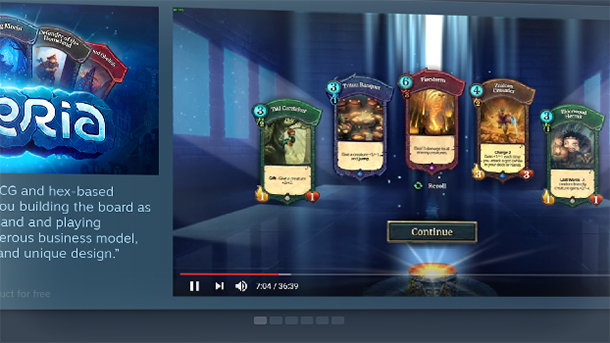
Aug 2, 2017
Steam News - JacobU
When we first created the Steam Community groups, the community itself was a smaller and simpler place. We wanted to give players on Steam an easy way to find other people with the same interests, coordinate their activities, and share their creative output. To that end, we made the tools and systems for joining and managing groups as simple as we could. When there were few great tools for discovering user groups, sending direct invites offered a way to spread awareness and build communities. But as the Steam Community has grown this approach to invites has not kept up with the needs of players. There are now many more ways to discover new and interesting groups and the invite system has been abused by more and more organized spammers.
So today we are changing the invite-and-join process for private groups, and taking steps to address spam.
So, we’re adding a new group type that will allow users to request to join the group. Requests are then put into a list for one of the group moderators to approve or deny. There are now three types of community groups:
By default, only the group owner is able to approve/deny requests to join a restricted group. Group owners can allow officers or moderators to invite and approve/deny membership requests to a group via a new section under “Group Permissions”.

To manage pending group requests, group owners (or officers/moderators if given permission) can find the new Manage Group Requests page from their admin tools section on the right-hand side of the group page:

If you are invited to a restricted or closed group, you will skip the membership queue and become a member once you accept the invite. If you have been denied entry into a group, the only way for you to join in the future is to get an invite from a member who has invite permissions.
First off, we see that more and more organized spammers are using bots to create groups on a huge scale. At some times, the number of new groups created explicitly for spamming outweigh the legitimate groups. Once a spammer has created a bunch of new groups, they then use bots to invite random players into the group. Even if only a small percentage of players that were invited end up joining any one of these groups, the spammer still can end up with a significant audience. The spammers then use these groups to advertise various websites or offers by posting frequent announcements to the members.
Players are understandably annoyed by these spam invites from random users.
To address this, you can now only be invited into a group by your friends. This still maintains the common uses of forming a closed group to hang out with your friends, or creating a restricted group for people of similar interests or achievements.
We're also working on improvements to the way that friend invites work to make it easier to connect with the people you know and give you more control over invites.
-The Steam Team
So today we are changing the invite-and-join process for private groups, and taking steps to address spam.
Joining a group
In the past, you could create a group that is either publicly joinable by anyone, or private and accessible only by invitation. Private groups are used for a variety of purposes, some of which make sense to restrict only to invites. For example, if you just want a group for your close friends to hang out and chat, then an invite-only group makes sense. But there are many more scenarios where private groups have some form of stated criteria to join, such as “Steam Level 1,000 Club” or “Mod Makers Club”. Invites directly into these kinds of groups still make sense, but getting an invitation for qualified people is more complicated and messy than it needed to be.So, we’re adding a new group type that will allow users to request to join the group. Requests are then put into a list for one of the group moderators to approve or deny. There are now three types of community groups:
- Public group – Users can join on their own or via an invite from a friend.
- Restricted group – Users can join by requesting membership. They can also receive an invite from a user that has permission to add members.
- Closed group – This is the most restricted group. Users can only join via invites by members who have permission to send invites. Users cannot request to join these groups.
Group admin tools
Any group that was previously a “Private group” will be converted to a “Restricted group”, which will allow users to request to join your group. This can be changed any time by the group owner. If your group is currently set to “Restricted” and you change the type to “Closed”, we’ll go ahead and decline any pending requests to join your group. Subsequently, if you change your group from "Restricted" to "Public" we'll approve all pending requests.By default, only the group owner is able to approve/deny requests to join a restricted group. Group owners can allow officers or moderators to invite and approve/deny membership requests to a group via a new section under “Group Permissions”.

To manage pending group requests, group owners (or officers/moderators if given permission) can find the new Manage Group Requests page from their admin tools section on the right-hand side of the group page:

If you are invited to a restricted or closed group, you will skip the membership queue and become a member once you accept the invite. If you have been denied entry into a group, the only way for you to join in the future is to get an invite from a member who has invite permissions.
Limits to group invites
Over time, we have seen the use of group invites shift from helpful to spammy - to the point where they can become annoying and disruptive to players. As we looked close at what these invites are being used for, we found some interesting and troubling trends.First off, we see that more and more organized spammers are using bots to create groups on a huge scale. At some times, the number of new groups created explicitly for spamming outweigh the legitimate groups. Once a spammer has created a bunch of new groups, they then use bots to invite random players into the group. Even if only a small percentage of players that were invited end up joining any one of these groups, the spammer still can end up with a significant audience. The spammers then use these groups to advertise various websites or offers by posting frequent announcements to the members.
Players are understandably annoyed by these spam invites from random users.
To address this, you can now only be invited into a group by your friends. This still maintains the common uses of forming a closed group to hang out with your friends, or creating a restricted group for people of similar interests or achievements.
Next Steps
These new features and improvements should make it easier to join groups that you are interested in while eliminating the spam group invites that show up in your Steam inbox. Over the next few weeks, we'll also be working on identifying and banning networks of groups that have been mass-created and exist for the sole purpose of spamming.We're also working on improvements to the way that friend invites work to make it easier to connect with the people you know and give you more control over invites.
-The Steam Team








